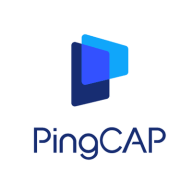

Find out in this report how the two Database as a Service (DBaaS) solutions compare in terms of features, pricing, service and support, easy of deployment, and ROI.
| Product | Market Share (%) |
|---|---|
| Google Cloud Spanner | 5.5% |
| TiDB Cloud | 0.1% |
| Other | 94.4% |


Cloud Spanner is the first and only relational database service that is both strongly consistent and horizontally scalable. With Cloud Spanner you enjoy all the traditional benefits of a relational database: ACID transactions, relational schemas (and schema changes without downtime), SQL queries, high performance, and high availability. But unlike any other relational database service, Cloud Spanner scales horizontally, to hundreds or thousands of servers, so it can handle the highest of transactional workloads. With automatic scaling, synchronous data replication, and node redundancy, Cloud Spanner delivers up to 99.999% (five 9s) of availability for your mission critical applications. In fact, Google’s internal Spanner service has been handling millions of queries per second from many Google services for years.
Unleash the power of AI-generated SQL and Serverless HTAP in a single cloud-native database. Experience real-time analytics and elastic scaling, all in a fully managed service.
Elastically and transparently scale to hundreds of nodes for critical workloads without changing business logic.
Use what you know about SQL – maintain your relational model and global ACID transactions while coping with your hybrid workloads at ease.
Equipped with built-in high performance analytics engine to analyze operational data without using an ETL.
We monitor all Database as a Service (DBaaS) reviews to prevent fraudulent reviews and keep review quality high. We do not post reviews by company employees or direct competitors. We validate each review for authenticity via cross-reference with LinkedIn, and personal follow-up with the reviewer when necessary.